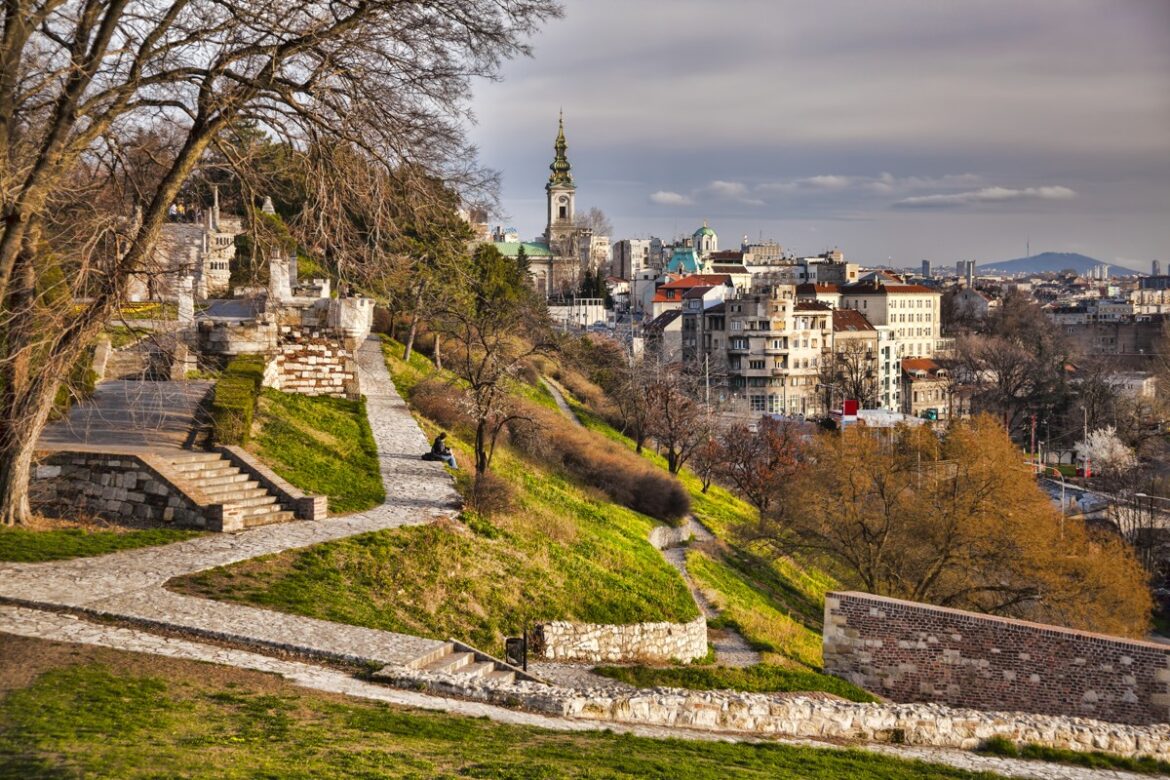Nestled in the heart of the Balkans, Serbia is a country of warm people, rich traditions, and landscapes that range from gentle plains to dramatic mountains. Often overlooked by mainstream tourism, Serbia offers a unique mix of history, culture, and natural beauty — all without the heavy crowds found in Europe’s more famous destinations.
Belgrade – The White City
The capital, Belgrade, sits at the confluence of the Danube and Sava rivers. Known for its lively spirit, Belgrade is one of Europe’s oldest continuously inhabited cities, with a history spanning more than two millennia. The Belgrade Fortress, located in Kalemegdan Park, offers panoramic views of the rivers and tells stories of Roman, Ottoman, and Austrian times.
By day, Belgrade is a city of museums, coffeehouses, and charming streets. By night, it transforms into one of Europe’s most vibrant nightlife capitals, famous for its floating clubs on the rivers. Skadarlija, the bohemian quarter, is perfect for an evening of traditional music, hearty Serbian cuisine, and local wine.
Novi Sad – Cultural Capital on the Danube
North of Belgrade lies Novi Sad, the capital of the Vojvodina province and a 2022 European Capital of Culture. The city is known for its relaxed atmosphere, colorful architecture, and friendly cafes. The Petrovaradin Fortress, often called the “Gibraltar on the Danube,” hosts the internationally renowned EXIT Festival every summer, drawing music lovers from around the world.
Nearby, the Fruška Gora National Park is dotted with vineyards and ancient monasteries, making it an ideal day trip for wine tasting and scenic hikes.
Nature and Outdoor Adventures
Serbia’s landscapes are surprisingly diverse. In the west, the Tara National Park offers dense forests, the emerald waters of the Drina River, and the famous House on the Drina, perched on a rock in midstream. The Uvac Canyon in the southwest is home to meandering river bends and rare griffon vultures, best explored by boat or from scenic viewpoints.
For mountain lovers, the Kopaonik range is a top winter sports destination, with ski slopes and resorts. In summer, it becomes a paradise for hiking and mountain biking. The Stara Planina mountains, near the Bulgarian border, are wilder and less visited, ideal for travelers seeking untouched nature and authentic rural life.
Historical and Cultural Heritage
Serbia’s location at the crossroads of empires has left it with a rich cultural heritage. Medieval monasteries such as Studenica and Sopoćani (both UNESCO World Heritage Sites) showcase stunning frescoes and centuries-old Orthodox traditions. Ottoman influences can be seen in towns like Novi Pazar, with its bazaars and mosques, while Austro-Hungarian architecture adds charm to cities like Subotica.
The Roman legacy is also strong — Serbia was the birthplace of several Roman emperors, including Constantine the Great. Archaeological sites like Viminacium and Gamzigrad-Romuliana offer fascinating glimpses into this ancient past.
Serbian Cuisine – A Feast for the Senses
Serbia’s food is hearty, flavorful, and a reflection of its multicultural heritage. Ćevapi (grilled minced meat), sarma (cabbage rolls), and prebranac (baked beans) are staples, often served with fresh bread and kajmak, a creamy dairy spread. The country’s love for grilled meats is matched by its passion for fresh vegetables, especially in summer.
Don’t miss local rakija — a strong fruit brandy that’s often homemade and served as a gesture of hospitality. In rural areas, guests are welcomed with bread, salt, and rakija, a tradition that speaks to the warmth of Serbian culture.
Practical Tips for Travelers
Best time to visit: Spring (April–June) and autumn (September–October) offer pleasant weather and fewer crowds.
Getting around: Major cities are connected by buses and trains, but renting a car is the best way to explore rural areas and national parks.
Currency: Serbian dinar (RSD). Credit cards are widely accepted in cities, but carry cash in smaller towns.
Language: Serbian is the official language, though English is commonly spoken in urban and tourist areas.
Serbia is a country of contrasts — lively cities and peaceful villages, ancient fortresses and modern festivals, rugged mountains and gentle plains. It’s a place where every traveler can find something to love, whether it’s dancing to live music in Belgrade, sipping wine in Fruška Gora, hiking in Tara, or simply sharing a meal with locals who treat strangers like old friends.
In Serbia, the beauty lies not just in the scenery, but in the connection between people and place. For those willing to explore beyond the familiar, this Balkan gem promises experiences as rich and varied as its history.


